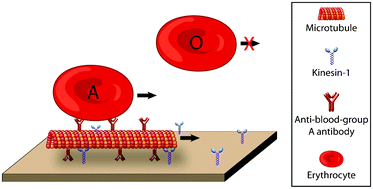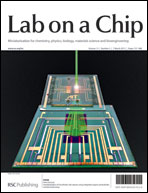The last decade has seen appreciable advancements in efforts towards increased portability of lab-on-a-chip devices by substituting microfluidics with molecular motor-based transportation. As of now, first proof-of-principle devices have analyzed protein mixtures of low complexity, such as target protein molecules in buffer solutions optimized for molecular motor performance. However, in a diagnostic work-up, lab-on-a-chip devices need to be compatible with complex biological samples. While it has been shown that such samples do not interfere with crucial steps in molecular diagnostics (for example antibody-antigen recognition), their effect on molecular motors is unknown. This critical and long overlooked issue is addressed here. In particular, we studied the effects of blood, cell lysates and solutions containing genomic DNA extracts on actomyosin and kinesin–microtubule-based transport, the two biomolecular motor systems that are most promising for lab-on-a-chip applications. We found that motor function is well preserved at defined dilutions of most of the investigated biological samples and demonstrated a molecular motor-driven label-free blood type test. Our results support the feasibility of molecular-motor driven nanodevices for diagnostic point-of-care applications and also demonstrate important constraints imposed by sample composition and device design that apply both to kinesin–microtubule and actomyosin driven applications.

This article is Open Access
 Please wait while we load your content...
Something went wrong. Try again?
Please wait while we load your content...
Something went wrong. Try again?


 Please wait while we load your content...
Please wait while we load your content...